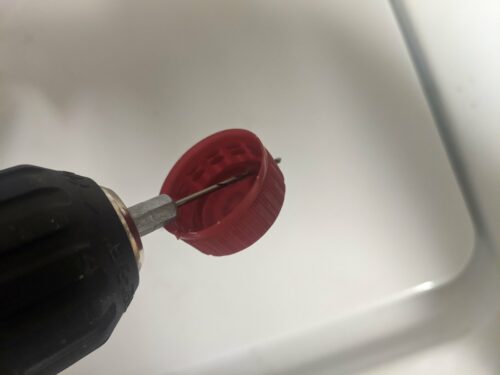First we build the tools, then they build us.
Marshall McLuhan
Some backpackers are gear-heads, talking endlessly to each other about the latest equipment developments. I am not one of those. I do not breathlessly scan the latest trends and developments. I totally missed the sun-hoodie fad, only noticing this trip when seeing twelve day-hikers in a row wear them going the other direction in Hurricane Canyon. Much of my gear remains the same as in 2012– even a few of the same original pieces. Other items, made out of Cuben fiber, now Dyneema, have been replaced with the same model after excessive fraying, and I did not hunt very hard for a similar item from another manufacturer. So I am no authority on gear. However, for anyone who might care, here is my brain-dump on equipment used during a quite challenging trip.
Most of you should skip this post unless you are rabid gear-o-philes. Go on, get out of here.
| Category | Item | Notes | Weight in grams | Weight in oz |
| worn/carried | ||||
| shirt | Smartwool Merino 150 Base Layer Long-Sleeve | 173 | 6.1 | |
| pants | RailRiders Eco-Mesh Pant | 310 | 10.9 | |
| trailrunner shoes | Altra Lone Peak 6 (size 11.5) with Superfeet Green insoles | 680 | 24.0 | |
| hiking gaiters | Dirty Girl | 34 | 1.2 | |
| hiking socks | Darn Tough CoolMax micro crew | 60 | 2.1 | |
| bandana | cotton/poly bandana | 30 | 1.1 | |
| trekking poles | Black Diamond Ultra Distance Z-pole with carbide tips minus straps, 120cm | 263 | 9.3 | |
| sun glasses | cheap generic polarized | 20 | 0.7 | |
| hat | Sunday Afternoons Adventure hat | 82 | 2.9 | |
| Total worn/carried | 1652 | 58.3 | ||
| ~ | ~ | ~ | ~ | 3.6pounds |
| pack | pack | Zpacks Arc Haul backpack (nylon gridstop, 2016) | 711 | 25.1 |
| pack liner | trash compactor bag | 60 | 2.1 | |
| cell phone holder | Zpacks shoulder pouch nylon | 19 | 0.7 | |
| phone | Android phone: Pixel (camera, GPS, etc) with Spigen case and Supershieldsz screen protector | 188 | 6.6 | |
| headphone | 2x X11 single Bluetooth earbud and charger | 9 | 0.3 | |
| 0.0 | ||||
| Cook/water | water bottles | 2 x 1.25 liter soda bottles | 84 | 3.0 |
| even more water | 1 liter Platypus | 30 | 1.1 | |
| cook stove | none (no-cook this trip) | 0 | 0.0 | |
| butane lighter | Scripto Tiny Lite | 12 | 0.4 | |
| cook pot | none (no-cook this trip) | 0 | 0.0 | |
| spoon | lexan | 9 | 0.3 | |
| water purifier | Platypus QuickDraw | 81 | 2.9 | |
| water purification backup | 10 MSR Aquatabs | 1 | 0.0 | |
| food bag | Zpacks Roll Top Blast | 40 | 1.4 | |
| bear rope | Zpacks 1.5 mm Z-Line Cord | 21 | 0.7 | |
| 0.0 | ||||
| Shelter | tarp/tent | ZPacks Hexamid solo tent w/screen (2018) | 269 | 9.5 |
| groundsheet | Zpacks Solo Bathtub | 91 | 3.2 | |
| tent stakes | Zpacks 6 6” Ultralight titanium stakes | 37 | 1.3 | |
| 0.0 | ||||
| Sleeping | sleeping quilt | Enlightened Equipment Enigma 10F, Zpacks stuff-sack | 705 | 24.9 |
| sleeping pad | Thermarest Z-Lite trimmed | 318 | 11.2 | |
| 0.0 | ||||
| Clothes | head net | “Sea to Summit” mosquito net, doubles as clothes bag | 23 | 0.8 |
| camp shirt | Icebreaker merino short sleeve | 139 | 4.9 | |
| camp shorts | GoLite men’s nylon shorts | 132 | 4.7 | |
| warm top | Western Mountaineering Flash down vest 2012 | 125 | 4.4 | |
| warm hat | LLBean Trail Model fleece hat | 36 | 1.3 | |
| neck gaiter | microfleece | 46 | 1.6 | |
| rain jacket | Marmot Mica medium | 210 | 7.4 | |
| wind jacket | Montbell Tachyon anorak | 63 | 2.2 | |
| warm gloves | Port Authority fleece | 35 | 1.2 | |
| spare socks | SmartWool mid-calf merino | 91 | 3.2 | |
| 0.0 | ||||
| Accessory bag | accessory bag | no-see-um mesh bag 7″x9″ | 8 | 0.3 |
| first aid kit | Band-aids, molefoam, aspirin, loperamide, sudafed, super glue, … | 61 | 2.2 | |
| sewing kit | home assembled | 20 | 0.7 | |
| magnifying glass | credit card size fresnel lens | 2 | 0.1 | |
| wallet with id | all-Ett sport sailcloth wallet (5g) plus cards | 36 | 1.3 | |
| backup fire starter | Bic mini lighter | 14 | 0.5 | |
| pen | ballpoint refill cartridge + spare | 1 | 0.0 | |
| flashlight | Petzl e+Lite | 27 | 1.0 | |
| backup compass | Suunto Clipper compass | 4 | 0.1 | |
| usb cable | 6inch microUSB to USB-C cable | 13 | 0.5 | |
| usb charger wall wart | Anker 511 USB C Charger 20W | 30 | 1.1 | |
| repair kit | Gorilla tape, foil tape, cuben fabric tape, spare trekking pole tip, etc | 25 | 0.9 | |
| knife | Victoronix Swiss Army Classic | 20 | 0.7 | |
| Toiletry bag | toiletry bag | no-see-um mesh bag 5″x6″ | 4 | 0.1 |
| tooth care | dehydrated dots of toothpaste, toothbrush with trimmed handle, gum brush, floss | 17 | 0.6 | |
| soap | Dr Bonner liquid in 0.5oz dropper bottle | 24 | 0.8 | |
| insect repellent | 100% DEET repackaged in 0.5oz dropper bottle | 23 | 0.8 | |
| sun screen | liquid, repacked in 0.5oz dropper bottle | 24 | 0.8 | |
| Outer pocket or inside pack | toilet paper | backup | 12 | 0.4 |
| toilet clean | homemade hiker bidet + spare | 6 | 0.2 | |
| toilet shovel | The Deuce #3 | 27 | 1.0 | |
| maps | maps, on double-sided 8.5×11 glossy laser paper, current trail section | 55 | 1.9 | |
| satellite comm | Garmin mini (spousal ease-of-mind) | 106 | 3.7 | |
| solar panel | FlexSolar 10W Portable Solar | 335 | 11.8 | |
| power bank | INIU 20W Fast Charge 10500mAh | 214 | 7.5 | |
| usb cable 2 | 1 meter right-angle USB-A to USB-C cable w/ power meter | 42 | 1.5 | |
| Total base weight | 4735 | 167.0 | ||
| 10.4 pounds |
Smartwool Merino 150 Base Layer Long-Sleeve: Although merino is supposed to not retain body odor as much as other fabrics, my shirt often overwhelmed by this smelly hiker. Pack straps caused a stain or discoloration on the shirt, which could not be removed by washing.
It would be good if my base layer top was SPF rated, and also protected the back of my neck, so I will look for alternatives on future trips.
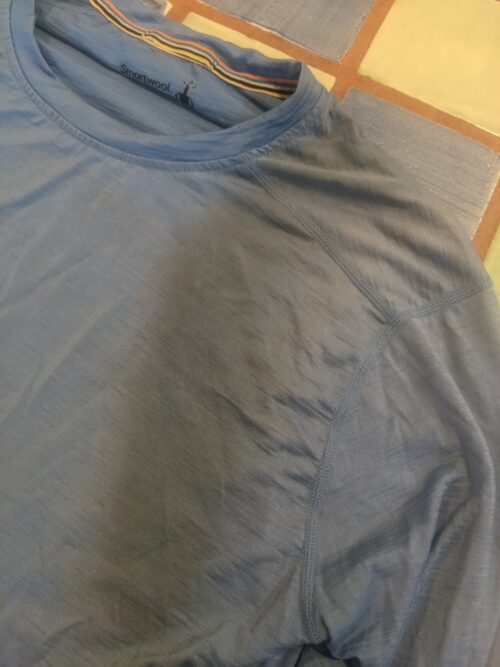
RailRiders Eco-Mesh Pant: These pants have really thin fabric, good for staying cool in warm weather. They are cut with enough room to allow deep knee bends for rock climbing. They sustained some rips from the tamarisk and willow brush along creeks on this trip. Railriders was out of stock for the Loden color– the Light Tan color was not as good for hiding trail dirt.
Altra Lone Peak 6 Shoes: Never have my trailrunner shoes been ripped apart so quickly or thoroughly on a long trail. I am guessing the fault is with the abrasive sandstone boulders on the Hayduke, and not the latest model of this shoe. By week four I was making several repairs to seams, using dental floss. When a sewed seam on this shoe starts to separate, the entire seam tends to open, due to a lack of locking stitches along the seam.
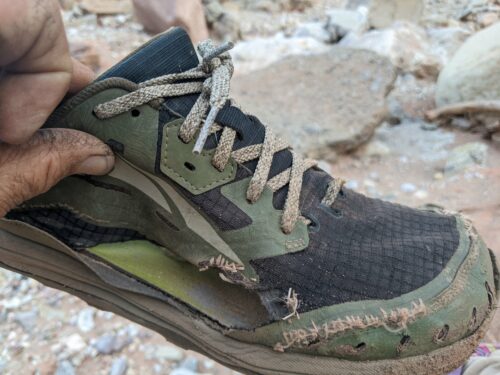
Darn Tough CoolMax micro crew socks: The socks had some rips and needed to be darned rather early in the trip, so they will need to be returned for their lifetime guarantee. Dirty Girl Gaiters helped keep small rocks and some sand out of shoes to reduce wear on the socks, until openings in the shoes became too large to repair.
Black Diamond Ultra Distance Z-pole with carbide tips minus straps, 120cm: I replaced my older, much-repaired poles with a new set, and for the first long hike in several years, neither pole broke. The poles fold up quickly to be stowed in the pack side pockets without needing to remove my pack, useful for switching from boulder-hopping mode to rock-climbing mode. These poles are so light that they are a joy to use.
Cheap generic polarized sunglasses: I did end up losing my sunglasses for several weeks until the next town, caused by brush along the Escalante River knocking them off my head. Now I always stow the sunglasses on top of my head but underneath my hat, to prevent this from happening again.
Sunday Afternoons Adventure hat: The slightest breeze from the back will make the rear flap flop up. The hat does not perform well in strong winds. I will change to something else next trip. I was certainly glad to have a hat, when I lost my sunscreen and could not replace for several weeks until the next town.
Zpacks Arc Haul backpack: The backpack ripstop fabric ripped in several places, especially the side water-bottle pockets. Sliding down large boulders while wearing my pack rubbed against the nylon fabric, causing wear and tear. Time to look for a new pack.
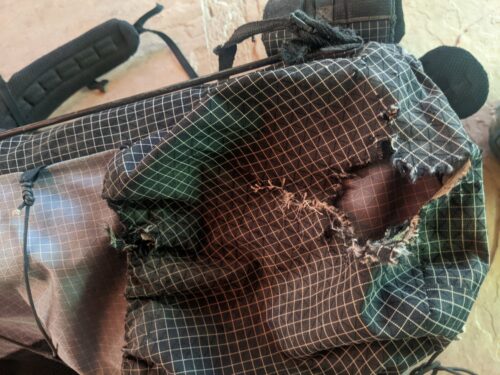
Android Pixel 3 phone: I purchased my phone used, which was a mistake. The battery, not user-replaceable, was already degraded by the previous owner, and now the reduced battery capacity and high battery internal resistance really became apparent. If I used Bluetooth with audio, and used GPS navigation a lot during the day, I might need to do a quick recharge in late afternoon just to get through the day.
I hope that a new EU directive to make cellphone batteries easier to replace might affect the US market in the future. I do wish that more options for smaller lighter cellphones existed, for backpackers watching their base weight.
Bluetooth earbuds and charger: Both my earbuds stopped working early on the trail. Cold nights might have affected the batteries. I was able to replace with another generic brand after getting to a town, and these worked well. I only used one earbud at a time, better to hear ambient sounds. Noise from frequent Utah wind gusts made listening difficult under some conditions, unless I covered the earbud with a bandana as a wind shield.
Water bottles: I ended up using up to 5 one-liter water bottles. I always included an extra bottle of (carbonated) water in each food cache, to add or replace bottles when needed. I did start with two Sawyer one-liter squeeze bottles, but each developed leaks.
Platypus QuickDraw water filter: I like this newly-introduced filter. You can view the filter media to see how dirty it is getting, two methods of backflush are described in the instructions, and an integrity check of the filter is documented. My filter was failing its integrity check by the end of the trip, so perhaps I allowed the filter to freeze at some point, even though I always slept with it in the pack underneath my legs. I did not leave the filter attached to my dirty water bottle during this trip, but I may on future hikes.
Zpacks Roll Top Blast food bag: Like most of my Cuben fiber (Dyneema) gear, I have reused this item way past the point where it needs to be replaced, because it was so expensive in the first place. But the bag is so frayed and delaminated that it really needs to be discarded.
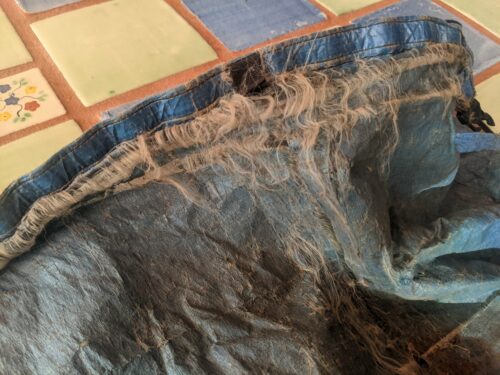
ZPacks Hexamid solo tent: Like the above item, I have used this for several years, and long fibers are peeling off, and the fabric appear clear in places. Need to replace soon.
Enlightened Equipment Enigma 10F: This was my first trip using a quilt instead of a bag, and it took several weeks to get used to it. With my excessive tossing and turning at night, the quilt felt drafty in cold weather.
Thermarest Z-Lite: Many thru-hikers have gone to an inflatable sleeping pad, but I am still wary of leaks. My foam pad is trimmed to 5 feet, or 12 sections, and the corners are also trimmed to resemble the rounded corners of an inflatable. I use the pad doubled up, to increase the R-value from 2.0 to 4.0, comparable to a good inflatable pad. Used as a 2.5 foot torso-length pad when doubled up definitely increases sleeping comfort. When I use a pad with only a 2.0 R value, I can feel the cold come up from the ground on cold nights, and a 4.0 R value makes a world of difference. Tied to the outside bottom of my pack, the pad was exposed to quite a bit of wear while sliding down sandstone boulders or navigating narrow draws.
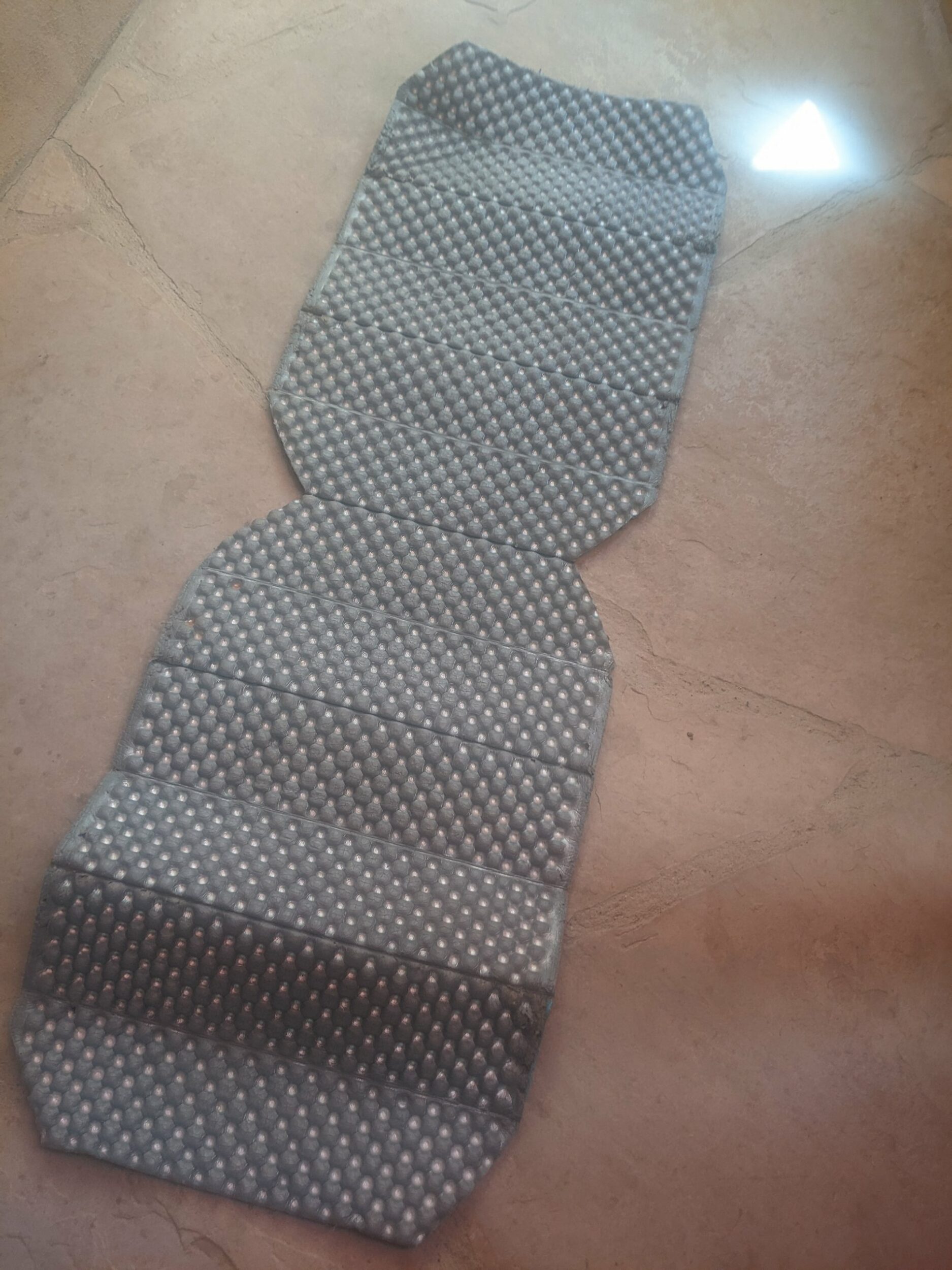
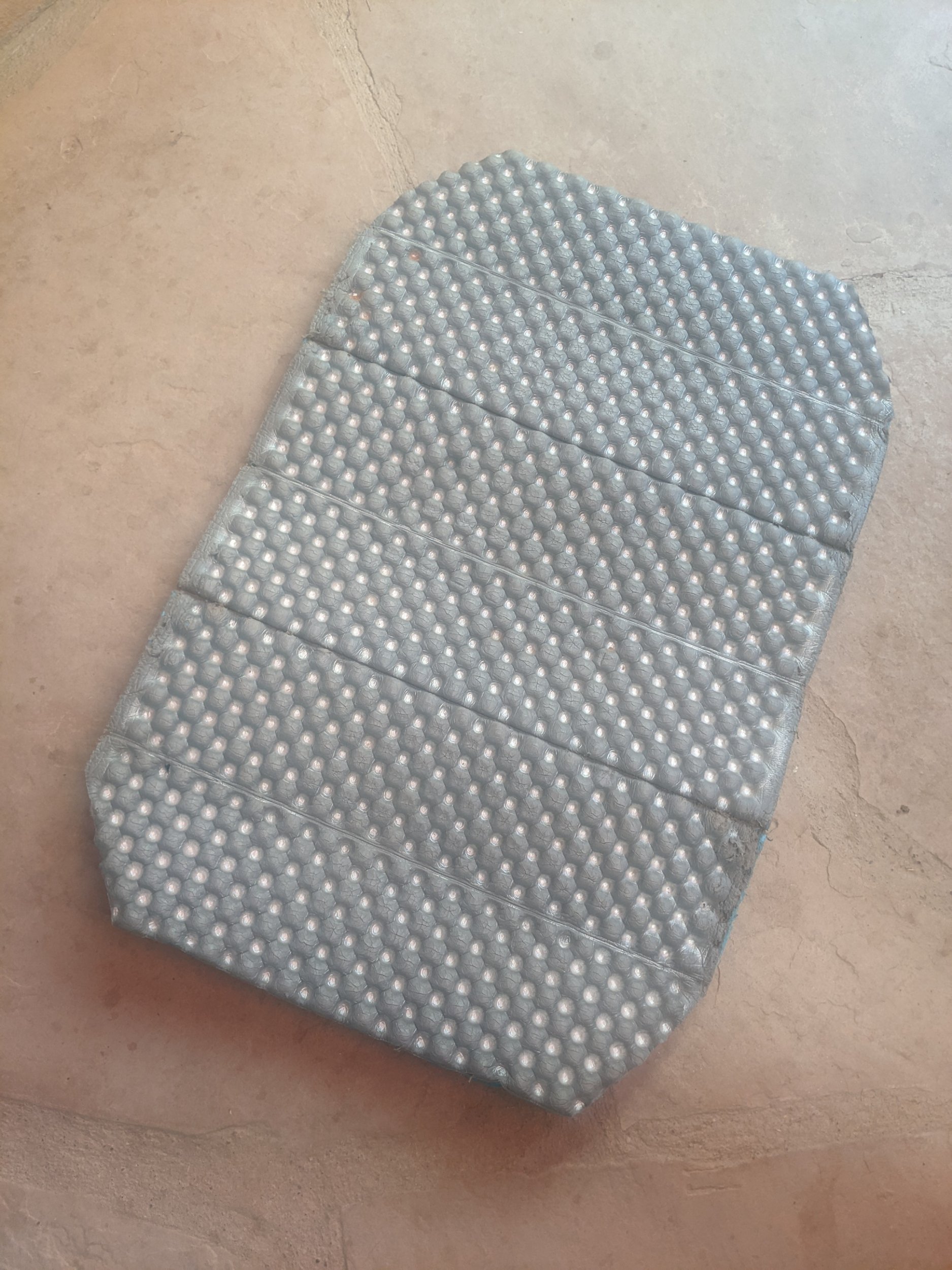
Western Mountaineering Flash down vest: Most hikers bring a puffy jacket, but I try to get by with a puffy vest, supplemented with a wind jacket when needed. The vest is getting less puffy over the years, so a replacement is needed.
LLBean Trail Model fleece hat: The hat is cut a little too short, so my earlobes stick out and get cold.
Microfleece neck gaiter: Very handy when used with the fleece hat, to cover my face in cold mornings, or to cover my eyes at night to block moonlight.

Montbell Tachyon anorak wind jacket: Mornings were often cold, and this jacket helped seal in the heat. Unfortunately the thin nylon fabric tears easily in brushy areas, but I still needed to keep it on for warmth, so I got a LOT of tears, which I tried to fix with Dyneema repair tape. The fabric was too thin to use a sewing kit– the needle holes would start more rips. Eventually the jacket acquired so many gashes that it must be replaced.
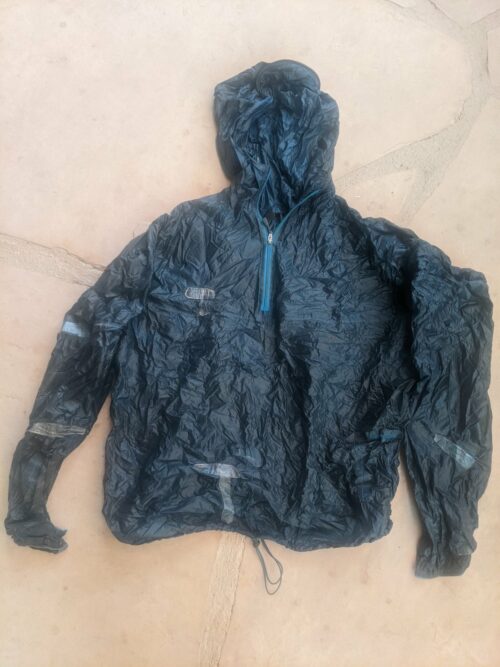
Sewing kit: I usually start with a dollar-store sewing kit, and throw out what I do not need, and add a sturdy needle that can pierce shoe leather and fabric. But now I understand that I must replace the cotton sewing thread with higher tensile strength polyester thread. I often use dental floss for sewing shoes and packs.
Suunto Clipper compass: I often lose my compass, and this trip was no exception. I like that this compass is so small and light, but must find a way to keep from dropping it when I remove something else from my pocket.
Sun screen: I lost my sun screen, which has happened on previous trips. I keep it in a tiny bottle in the side pocket underneath my water bottle, and sometimes it slips out. Now I have tied the sun screen to my pack with a length of cord, so it should not get lost on future excursions.
FlexSolar 10W solar panel: I have tried several solar panels on various long hikes, and have been dissatisfied with all. Most do not deliver anywhere close to the power they advertise. This one is larger and heavier than the others, and pushed my base weight beyond the 10 pound limit that is generally classified as “ultralight” hiking. It did produce an honest 8.0W+ of power when pointed directly at the sun, according to my USB cable with power meter. That is, to say, the panel produced almost 10W maximum at the beginning of the trip. By the end, the panel gave a maximum output of 2.2W, and I suspect one of the two half-panels had suffered a fault. This lower power was not able to keep up with my daily use, so I had to make an unscheduled stop in a town, Colorado City, to recharge. Fortunately the solar panel kept working well until fairly late in my trip. Since I did not go into many trail towns, if I did not have solar power I would have needed a much larger, heavier, power bank, and even then might need to conserve power by not listening to podcasts or audiobooks.
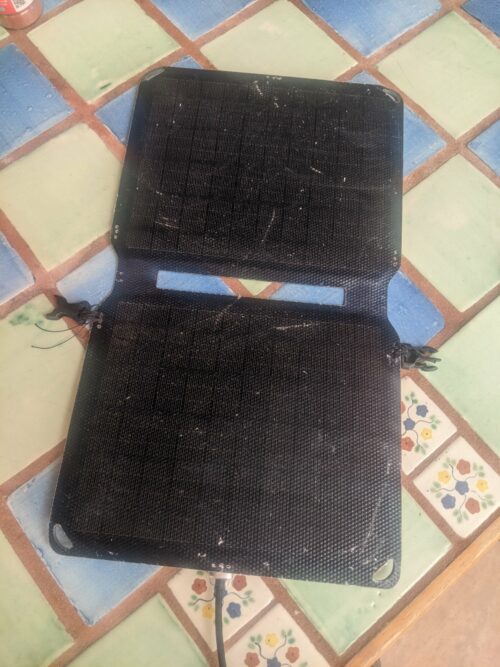
INIU 210500mAh power bank: This power bank has an led digit display of percent charge remaining, much more precise than a stack of led lights. For better-known brands, you have to go to a larger power bank to get a digit display option. If the display also showed power in watts for charging and discharging, that would be even better. This power bank only has one input port, USB-C, so if that port got damaged during a trip, it could be a single-point failure. I got the power bank in color white, which shows too much trail dirt, and would suggest trying a different color.
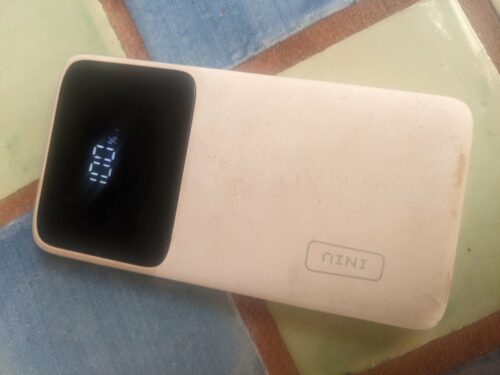
USB to USB-C cable with power meter: I found this on Amazon, under the brand Mcdodo. The cable is a little heavier, but is useful to show how fast your electronics are charging. (If the power meter function was built into the power bank, that would be even better, as you could use a regular USB cable.) The digital readout is on the USB-C side, which I would plug in to my power bank during the day when charging from the solar panel, mounted on top of my pack with small side-buckle clips. I was afraid this digital readout stuck out too far, and might get damaged, or even worse, cause the sole input of my power bank to become damaged. During my third week, I fell backwards onto my pack, and the USB-C plug bent, and no longer worked. Fortunately I packed a spare regular USB cable.
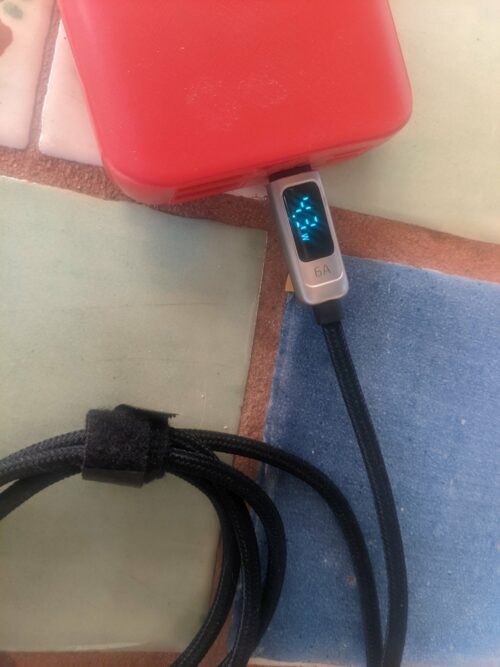
Later, once home, I realized one could add a short USB-C male to USB-C female cable to the power display cable so the meter readout would be inline, and less likely to be damaged by stress on the connector.
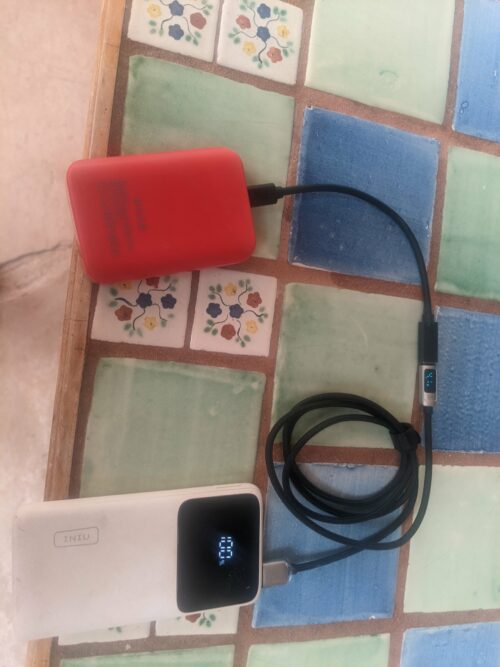
Or, if your Android phone has a good power meter app ditch the extra hardware and use a regular USB cable. (Some phones can read charging current directly, others infer from the battery voltage and are not very reliable.)
Hiker bidet: I switched to a bidet system this year. A few sheets of toilet paper were carried for emergencies, but for the most part, a vigorous squirt of water replaced the TP. I drilled a 1/16 inch hole diagonally starting just inside the seal ridge of a soda bottle cap, which gives an adequate stream of water, and is lighter weight than some commercial backcountry bidets.
